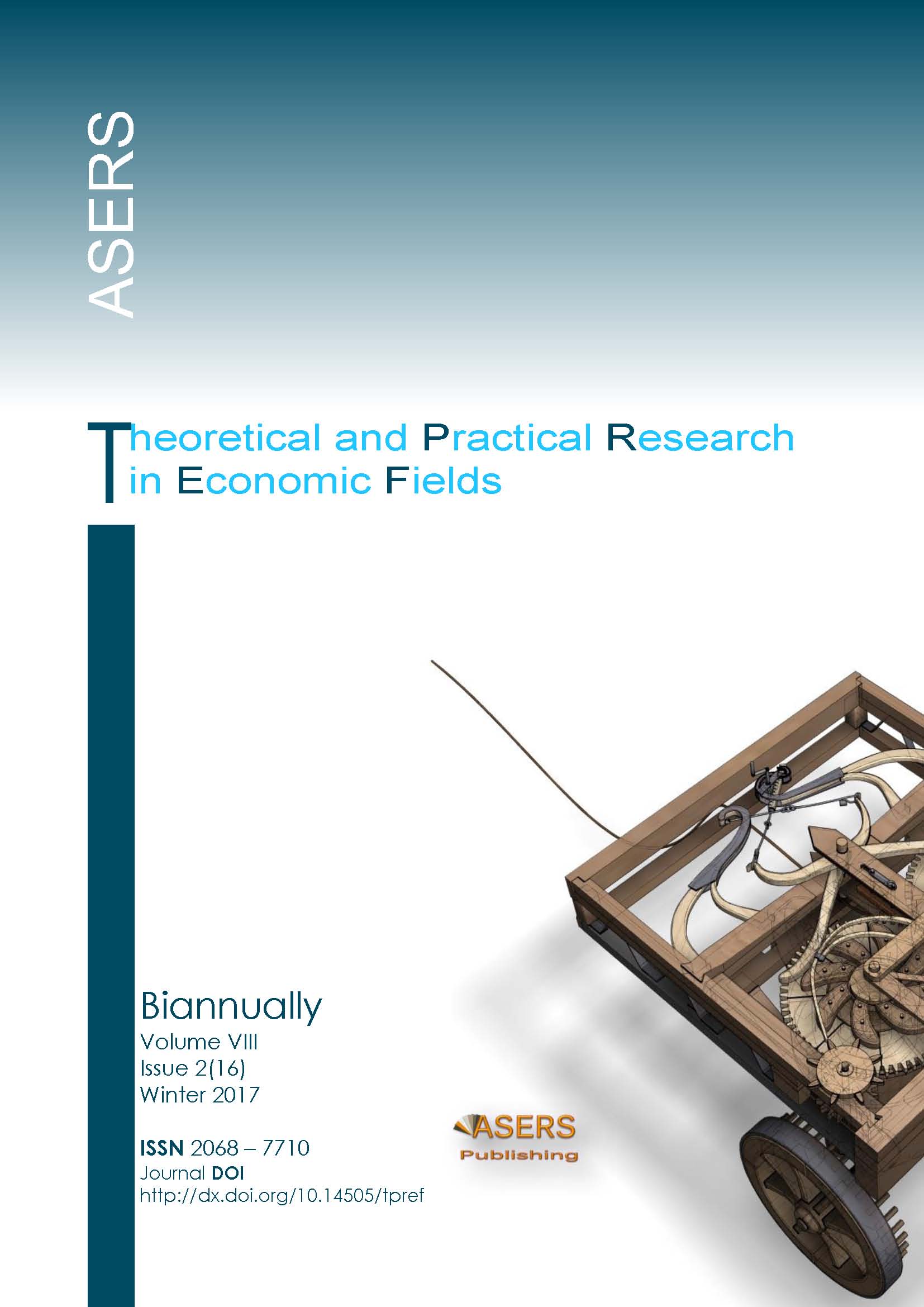OPINIONS ON THE THEORIES OF SAVAGE AND DE FINETTI
Abstract
Feduzi, Runde and Zappia (2012, 2014, 2017) have claimed repeatedly that de Finetti and Savage formally allowed imprecise , indeterminate, non-additive probabilities to be used by decision makers in their normative theory of decision making .The only way that non additivity can be formally incorporated into a decision theory is by the use of a variable similar to Keynes’s w or Ellsberg’s ρ. Nowhere in anything written by de Finetti and/or Savage in their lifetimes does any such variable appear in their formal theoretical analysis or in any of their supporting axioms. Savage stated that he did not know how to integrate such a variable that would take account of vagueness, into the additive probability measure that represented his formal, normative theory. Feduzi, Runde and Zappia (2012, 2014, 2017) have misinterpreted the de Finetti and Savage concerns and sympathy for vacillating ,indecisive decision makers, who were confronted with vague and ambiguous evidence, with their recognition that defining one’s personal probabilities can be a difficult task ,with the erroneous and mistaken belief that de Finetti and Savage incorporated a role for imprecise and indeterminate probabilities within their formal, subjectivist, normative theory of probability and their SEU decision theory ,which rests completely on additive probability.
References
[2] Arthmar, R., and Brady, M.E. 2017. The Keynes-Knight and the de Finetti-Savage’s approaches to probability: an economic interpretation; Reply to Feduzi, Runde, and Zappia History of Economic Ideas, 25, no.1.
[3] Boole, G. 1958 [1854]. An Investigation of the Laws of Thought on Which are founded the Mathematical Theories of Logic and Probability. New York: Dover Publications.
[4] Brady, M. E. 2004a. J. M. Keynes’ Theory of Decision Making, Induction, and Analogy. The Role of Interval Valued Probability in His Approach. Pennsylvania, Philadelphia; Xlibris Corporation.
[5] Brady, M.E. 1993. J. M. Keynes's theoretical approach to decision making under condition of risk and uncertainty’. The British Journal for the Philosophy of Science, 44: 357-76.
[6] Brady, M.E. 1994. On the Application of J. M. Keynes’s Approach to Decision Making’. International Studies in the Philosophy of Science, 8(2): 99–112.
[7] Brady, M.E. 2004b. Essays on John Maynard Keynes and …. Pennsylvania, Philadelphia: Xlibris Corporation.
[8] Brady, M.E. and Arthmar, R. 2012. Keynes, Boole and the interval approach to probability. History of Economic Ideas, 20: 65-84.
[9] de Finetti, B. 1930. Fondamenti logici del ragionamento probabilistic. Bollettino dell’Unione Matematica Italiana, 5: 1-3.
[10] de Finetti, B. 1931. Sul significato soggettivo della probabilità. Fundamenta Matematicae, 17: 298-329.
[11] de Finetti, B. 1955. La notion de ‘horizon Bayesien’. Colloque sur l’analyse statistique, pp.58-71. Paris, Masson.
[12] de Finetti, B. 1964 [1937]. Foresight: Its logical laws, its subjective sources. In H. E. Kyburg and H. E. Smokler (eds) 1964, Studies in Subjective Probability, New York, John Wiley & Sons, pp.93-158.
[13] de Finetti, B. 1967. Economia delle Assicurazioni, Torino, UTET.
[14] de Finetti, B. 1967. L’Incertezza nell’Economia. Part One of de Finetti and Emanuelli 1967.
[15] de Finetti, B. 1967. Probability: Interpretations. International Encyclopaedia of the Social Sciences, vol. 12, New York, Macmillan, pp.496-505.
[16] de Finetti, B. 1974.Theory of Probability, Vol. 1, New York, John Wiley and Sons.
[17] de Finetti, B. 1985 [1938].Cambridge probability theorists. Decisions in Economics and Finance 8: 79-91.
[18] de Finetti, B. and Savage, L.J. 1962. Sul Modo di Scegliere le Probabilità Iniziali’. Biblioteca del Metron, Serie C, pp. 81-154. In the Writings of Leonard Jimmie Savage. American Statistical Association and Institute of Mathematical Statistics, 1981. Washington, D.C. pp. 565-614.
[19] Feduzi, A., Runde, J. and Zappia, C. 2017. De Finetti and Savage on the normative relevance of imprecise reasoning: A reply to Arthmar and Brady. History of Economic Ideas, 25, no.1. In Press
[20] Feduzi, A., Runde, J., and Zappia, C. 2012. De Finetti on the Insurance of Risks and Uncertainties." British Journal for the Philosophy of Science, 63(2): 329-356.
[21] Feduzi, A., Runde, J., and Zappia, C. 2014. “De Finetti on Uncertainty,” Cambridge Journal of Economics, 38 (1): 1–21.
[22] Karni, E. 2005. Savage’s Subjective Expected Utility Model. John Hopkins University, November 9.
[23] Keynes, J.M. 1921. A Treatise on Probability. London: Macmillan.
[24] Russell, B. 1922. Review of a Treatise on Probability, by J. M. Keynes. Mathematical Gazette, 11(159): 119–25.
[25] Russell, B. 1931. Review of Ramsey, Mind 40: 476-482. Reprinted in Russell, 1996.
[26] Russell, B. 1932. Review of Ramsey, Philosophy, 7: 84-86. Reprinted in Russell, 1996.
[27] Russell, B. 1959. My Philosophical Development. Unwin Book: London.
[28] Russell, B. 1996. Collected Papers of Bertrand Russell. Unwin Book: London.
[29] Savage, L. J. 1962. Subjective probabilities and statistical practice. In G. A. Barnard and D. R. Cox (eds.) 1962, The Foundations of Statistical Inference: A Discussion, London, Methuen, 9-35.
[30] Savage, L. J. 1971. “Elicitation of Personal Probabilities and Expectations”. In the Writings of Leonard Jimmie Savage. American Statistical Association and Institute of Mathematical Statistics, 1981. Washington, D.C. pp. 565-614.
[31] Savage, L. J. 1972 [1954]. The Foundations of Statistics. New York, Dover Publications.
[32] Savage, L.J. 1967. Difficulties in the theory of personal probability. Philosophy of Science, 34: 305-310.
[33] Vicig, P., and Seidenfeld, T. 2012. “Bruno de Finetti and Imprecision: Imprecise Probability does not Exist!” Journal of Approximate Reasoning, 53(8): 1115-1123
Non-Exclusive License under Attribution 4.0 International Public License (CC BY 4.0):
This ‘Article’ is distributed under the terms of the license CC-BY 4.0., which lets others distribute, remix, adapt, and build upon this article, even commercially, as long as they credit this article for the original creation. ASERS Publishing will be acknowledged as the first publisher of the Article and a link to the appropriate bibliographic citation (authors, article title, volume issue, page numbers, DOI, and the link to the Published Article on ASERS Publishing’ Platform) must be maintained.
